John Hurrell – 25 November, 2014
Cousins' paintings are unnervingly strange in terms of the complexity of their peek-a-boo layers and the difficulty one has in finding a unified resolution of the separated, sandwich-like parts. Although they are not directly related to lenticular processes that rely on lateral movement that artists like Megan Jenkinson and John Drawbridge have used, there is an unnerving quality about their more optically ‘stable' peek-a-boo laminations.
This Kitchener St, James Cousins exhibition of five paintings carries on with the interesting developments of last year’s show, and Accent (July 2011) that he presented in Lorne Street - changes that grew out of Signal, his previous exhibition of 2009 with its distinctive masked off surfaces of zigzagging parallel lines and unpredictable, lurching, direction changes. Now the lines are finer (much more delicate), not varied in their spacing, usually holistically ordered, and often symmetrically composed.
They continue using a base of flowers (lilies, orchids, irises and roses), partly for decorative effect, and partly to calculatedly undermine the seemingly obvious distinction between nature and culture. Their intricate shimmering surfaces optically mix up the complex layers so that from a distance sometimes top and bottom are inseparable. As usual these works of Cousins are extraordinarily difficult to photograph. They not only acquire an internal blurriness and faintness that is not apparent in personal encounter, but they also, when documented digitally, take on extra moiré effects.
So looking at Agent‘s five gallery works in detail (with one other in the Wellesley Street window), the shimmering lines of the top (outer) surfaces continue to intrigue - they’re like record grooves. With their titles referencing the plate numbers of the illustrative flower photographs used for each work, the largest and most complex painting is Untitled (pl 344), where several patterns of receding perspectives are overlaid, plus one of parallel lines.
On the short wall opposite the entrance are two works identical in size - Untitled (pl 112) and Untitled (pl 517) - and with very similar compositional structures of groups of coloured vertical bars. Some have their colour added on top of the finely intricate, masked off and horizontal, wavy lines.
The two differently sized, blue works on the wall opposite Untitled (pl 344), have less conspicuous contrast between base flower and upper layer. With Untitled (pl 474) and Untitled (549) the two levels are comparatively integrated and less spatially confusing. One has circular surface lines whilst the other has them converging to a vanishing point. The hotter-coloured, blotchy-shaped window work - Untitled (pl 204) - because of its location, can’t be examined closely.
Cousins’ paintings are unnervingly strange in terms of the complexity of their peek-a-boo layers and the difficulty one has in finding a unified resolution of the separated, sandwich-like parts. Although they are not directly related to lenticular processes that rely on lateral viewer movement that artists like Megan Jenkinson and John Drawbridge have used, there is an unnerving quality about their more optically ‘stable’ peek-a-boo laminations. The ‘shimmer’ might be spatially fixed and flat (not projecting with two vertical sides) but there is a related visceral level that leans toward a Deleuze and Guattarian metaphor with its intricate (crumbling and floating) stratifications - another sensibility entirely.
John Hurrell
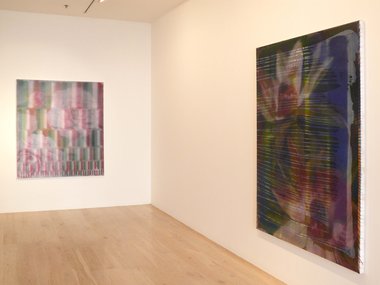

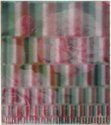
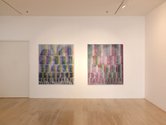
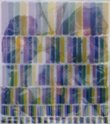
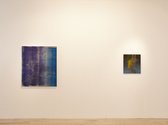
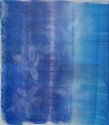
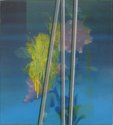
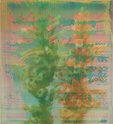
 Two Rooms presents a program of residencies and projects
Two Rooms presents a program of residencies and projects Advertising in this column
Advertising in this column



This Discussion has 0 comments.
Comment
Participate
Register to Participate.
Sign in
Sign in to an existing account.